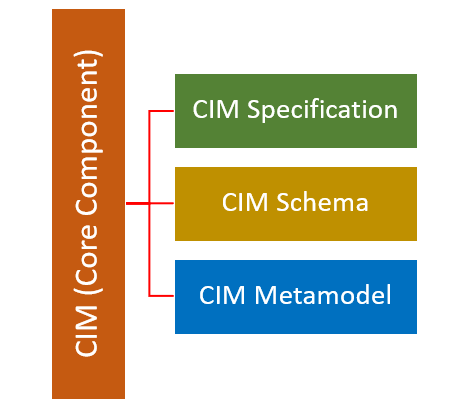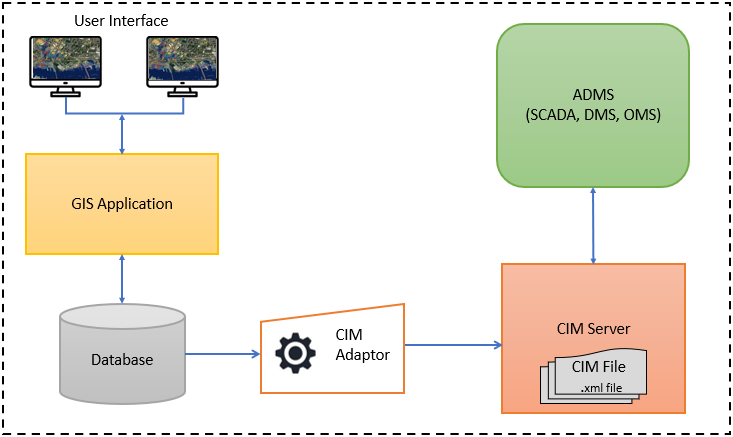Toward Seamless GIS-ADMS Integration in Electrical Utilities | Cyient Blog
Written by Rishikesh Vishwakarma 14 Mar, 2024
In the power sector, geographic information systems (GIS) and advanced distribution management systems (ADMS) are critical in managing and optimizing electrical distribution networks. GIS is a technology that integrates spatial data with attribute information, enabling utilities to map and analyze the physical layout of power assets, while ADMS is a comprehensive software platform designed for real-time monitoring, control, and optimization of the distribution of electrical power. Together, GIS and ADMS (SCADA, DMS, OMS) offer utilities a powerful combination for efficient decision-making and enhanced management of intricate components within the power system.
Globally, utilities are integrating ADMS and GIS through the Common Information Model (CIM) to enhance operational efficiency and decision-making. CIM integration streamlines data management, providing real-time visibility and facilitating informed decisions during routine operations and emergencies. It improves asset management, supports strategic planning, and ensures compliance with regulatory requirements. By adopting CIM integration, utilities optimize current operations and prepare for future technological advancements, including the integration of smart grid elements and emerging innovations in the energy sector.
Understanding CIM
The common information model, or CIM, is a standardized framework for representing and exchanging information related to power system assets, operations, and events within the utility industry. It provides a common language and data model that enables interoperability between different systems and applications used by utilities, vendors, and service providers.
CIM is structured around a set of standardized object-oriented classes, attributes, and relationships that define various aspects of the power system domain, covering a wide range of entities, including power plants, substations, transformers, transmission lines, distribution feeders, loads, measurements, events, and control devices. This unified approach to data representation ensures consistency and compatibility across different systems and applications, facilitating seamless data exchange and integration between disparate systems such as GIS and ADMS.
Features of CIM
CIM is a standardized data model comprising classes, attributes, and relationships that represent diverse sides of the power system domain. This model is defined within the CIM Specification and implemented through the CIM Schema. CIM ensures semantic interoperability by fostering a shared understanding of data semantics facilitated by its CIM Metamodel. This common understanding enables consistent interpretation and exchange of information across different systems.
Moreover, CIM's extensibility allows utilities to customize and extend the data model to accommodate specific business requirements and domain-specific applications. This flexibility is particularly valuable in the dynamic utility landscape. CIM integrates seamlessly with industry standards such as the IEC 61970 and IEC 61968 series, which specify communications protocols and interfaces for utility automation systems. CIM enables seamless integration and interoperability among GIS, ADMS, and other utility systems. By facilitating consistent data representation, interpretation, and exchange, CIM enhances the management and optimization of power system operations, contributing to more efficient and effective utility operations.

GIS-ADMS integration
A unified GIS-ADMS solution, integrating network data and providing a consistent view of the network model, establishes a robust framework for adapting to the dynamic shifts within the electric industry.
The integration journey begins with GIS data preparation, where spatial data related to power distribution networks is structured according to CIM specifications. This data is processed through a CIM adapter within the GIS system, generating CIM-compliant XML files. These files capture information about the topology, connectivity, and attributes of the power system elements. The CIM files are then transmitted to the ADMS environment, where a corresponding CIM adapter interprets the data. This adapter ensures the seamless integration of GIS spatial information into the ADMS operational database, creating a unified source that combines spatial and real-time operational aspects.
This integrated approach enhances decision-making, asset management, and network analysis within the ADMS. It provides utilities with a holistic view of their power distribution infrastructure, improving overall reliability, efficiency, and responsiveness. Continuous updates and validations are integral to the process, ensuring that the CIM integration remains accurate, up-to-date, and aligned with evolving industry standards. Using XML or GML (geography markup language) as CIM file formats allows for flexibility and compatibility in the exchange of information between GIS and ADMS systems. Overall, GIS-ADMS integration through CIM file processing represents a transformative step toward a unified and intelligent approach to power system management.
Seamless integration through CIM
The CIM Adapter in GIS is a vital component that converts GIS data into a CIM-compliant format, typically CIM XML. It interprets spatial data stored in GIS databases, ensuring adherence to the CIM Schema. It generates CIM files containing detailed information about power system elements' topology, connectivity, and attributes, providing a standardized snapshot of GIS data.
 GIS-ADMS integration through CIM file
GIS-ADMS integration through CIM file
Once generated, the CIM file is transmitted to the ADMS system through secure protocols or direct network connections. Upon reception in the ADMS environment, a CIM adapter or analyzer interprets the CIM Schema, parsing the XML content into a format usable by the ADMS for real-time operational purposes.
The CIM file received by the ADMS undergoes integration into the operational database, aligning spatial information from GIS with real-time operational data. This establishes a unified source of information combining spatial and operational aspects of the power distribution network.
For dynamic network environments, the CIM integration process supports continuous updates, monitors GIS changes, and transmits corresponding CIM files to ADMS whenever modifications occur. CIM files may adopt different formats, such as XML, GML, or both, based on system compatibility and requirements. XML's readability and widespread support make it popular, while GML may be preferred for its geospatial capabilities.
Validation and testing are integral throughout the integration process. Both the GIS and ADMS systems undergo testing to ensure seamless CIM file generation and consumption processes, synchronization between systems, and adherence to CIM standards, ensuring accurate and reliable integrated information.
Challenges and considerations
Integrating the GIS and ADMS systems presents a few challenges:
- Data interoperability: Achieving data interoperability between GIS and ADMS platforms presents challenges stemming from variations in data formats, schemas, and semantics. Maintaining uniform data quality and accuracy across integrated systems is crucial to prevent errors and inconsistencies in network operations. Utilities must implement robust data management strategies encompassing cleansing, validation, and synchronization processes to uphold data integrity and interoperability.
- Integration complexity: Combining GIS and ADMS presents complicated technical hurdles surrounding tasks such as data mapping, transformation, and system integration. This process demands considerable time, resources, and expertise, potentially resulting in substantial implementation expenses. Utilities must precisely assess the costs and advantages of integration efforts and craft rational implementation strategies to mitigate risks and achieve project success.
Role of GIS-ADMS in grid modernization
Integrating GIS and ADMS to establish a unified network model positions utilities for upcoming technological advancements. It facilitates the seamless integration of advanced technologies, including smart meters and automation systems, supporting initiatives for grid modernization. The unified network model not only boosts adaptability to emerging technologies such as predictive analytics, machine learning, and adaptive control systems for proactive maintenance but also streamlines the integration of distributed energy resources (DERs). In essence, the unified network model ensures that utilities become future-ready, well-prepared to navigate and incorporate technological advancements to come.
GIS-ADMS integration services
Cyient has assisted utilities in facilitating GIS-ADMS integration, ensuring a seamless convergence of the two systems. Beginning with a comprehensive assessment and strategic planning, we address technical compatibility by offering custom integration solutions that adhere to industry standards such as the CIM. Cyient optimizes real-time synchronization between GIS and ADMS for a unified and up-to-date network model. The solution is designed with scalability, future readiness, and adherence to security and compliance standards. Beyond the technical aspects, Cyient provides user training and ongoing support and collaborates closely with stakeholders to foster effective communication throughout the integration process. Through these measures, Cyient empowers utilities to modernize their grid management practices, enhance operational efficiency, and position themselves for future advancements in the energy sector.
In conclusion, the integration of GIS and ADMS, guided by standards like CIM, represents a transformative strategy for utilities. This unified approach enhances operational efficiency, decision-making, and overall reliability, providing a solid foundation for utilities to navigate the complexities of an ever-evolving energy landscape and integrate emerging technologies seamlessly.
About the Author
Rishikesh Vishwakarma brings 12 years of experience in the Digital Transformation of Utilities, with a focus on specialized areas such as ADMS (Advanced Distribution Management System) implementation, SCADA, Substation Automation, and IT/OT integration. His interests lie in developing comprehensive solutions and overseeing the operationalization of grid modernization initiatives from start to finish.
.png?width=774&height=812&name=Master%20final%201%20(1).png)